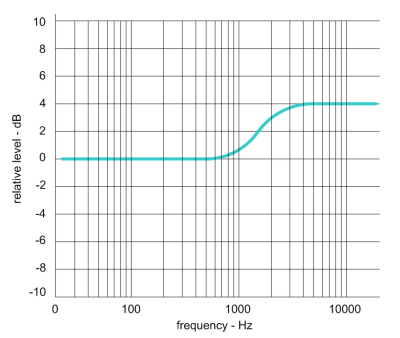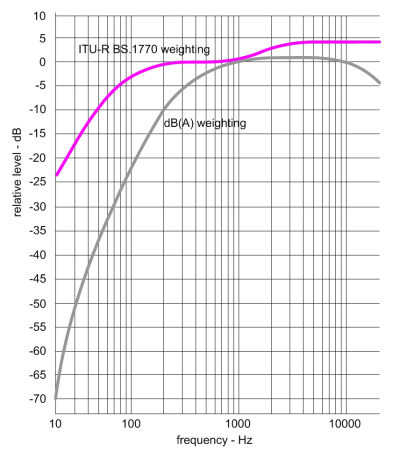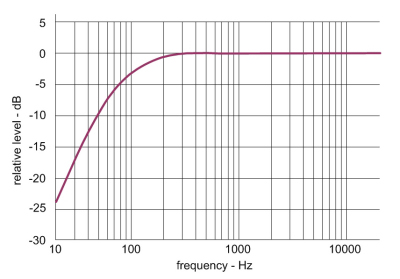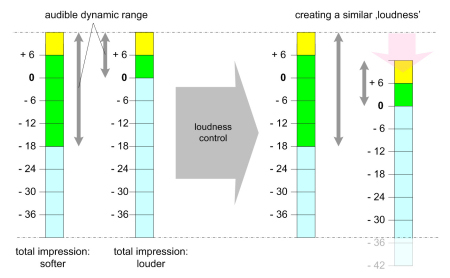ITU-R BS.1770 and EBU R128 were introduced to establish a measurement procedure that takes account of audible loudness differences between different broadcast audio material. The intention is to match the audio levels of 'loud' advertizing clips and the audio levels of regular movies or talk shows.
The standards are:
Recommendation ITU-R BS.1770
EBU R128
An open algorithm for the measurement of loudness and the true peak levels of programs with simple implementation are the basis of both standards. A so-called 'K-weighting' filter curve is defined. This filter curve is applied to all audio channels, except LFE. The goal is to achieve an objective measurement for a subjective impression of loudness.
The result of the 'K-weighting' filter curve is LKFS. LKFS is not a level, it is the loudness unit, the illustration of loudness referenced to the digital Full Scale. The single unit is 'LU', the Loudness Units. 1LU is equivalent to 1dB.
ITU-R BS.1770 recommends the use of LKFS with the unit LU, the EBU recommends LUFS (EBU Tech Doc 3341) with the unit LU. Generally LKFS and LUFS are equivalent with each other. One of the differences is the implementation of areas with 'no' audio. The EBU measurement recognizes zones with no audio and doesn't integrate these zones into the measurement. With the ITU measurement these zones must be kept control of manually.
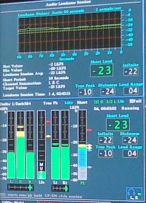
loudness measurement
(here Tektronix)

